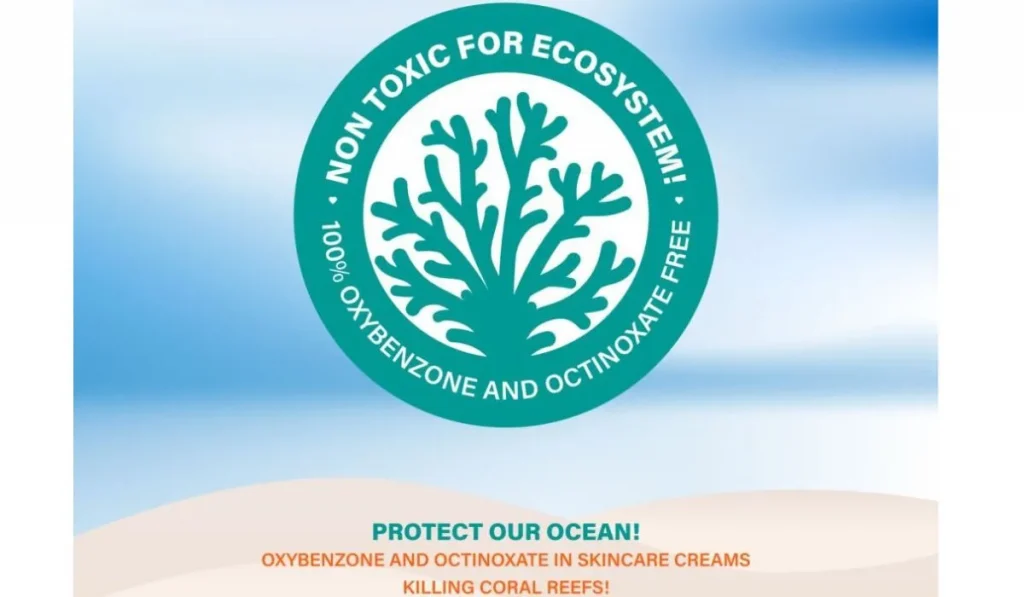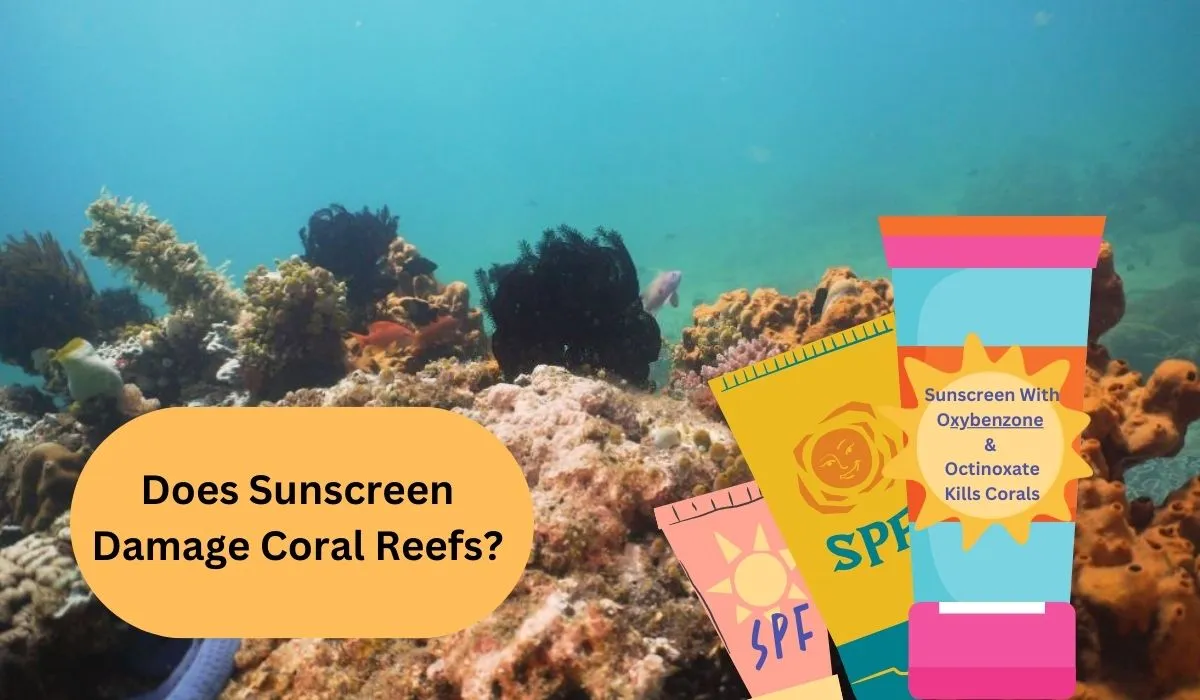Sunscreen is an essential product for protecting our skin from sun damage that can lead to cancer. However, some chemical UV filters found in sunscreens have been implicated in contributing to coral reef bleaching.
With oceans and marine ecosystems already under threat, this has raised alarm bells. But how much of this is substantiated? Let’s examine the scientific evidence behind the impacts of sunscreen on coral reefs.
What Is The Truth Behind Sunscreen Damaging Coral Reefs?
Several laboratory and field studies have found that some chemical UV filters – especially oxybenzone and octinoxate – can induce coral bleaching and mortality at very low concentrations.

These chemicals get washed off swimmers’ skin and interact with corals in various ways:
- They act as endocrine disruptors, mimicking estrogen and altering hormone function in corals. This affects reproduction, growth and immunity.
- They induce mutations in corals’ symbiotic algae, zooxanthellae. This alters photosynthesis, causing the algae to get expelled. This leads to coral bleaching.
- They damage coral DNA, increase disease susceptibility, and disrupt early life stages and larval settlement.
However, some experts argue that lab studies used higher concentrations of sunscreens than what would be found in oceans. Natural light, currents and dilution make real-life impacts smaller.
But the risks cannot be denied as these chemicals bioaccumulate in reefs. Local factors like number of swimmers and poor wastewater treatment also exacerbate the problem in popular tourist sites.
Steps to Prevent From Using Sunscreen Which Damages Coral Reefs
Here are some precautions swimmers can take to avoid damaging fragile coral ecosystems with sunscreen use:
- Avoid sunscreens containing oxybenzone and octinoxate. Check labels and choose mineral/physical blockers like zinc oxide and titanium dioxide instead.
- Liberally apply sunscreen well before getting in the water so less gets washed off. Put it on 20-30 minutes before entering.
- Wear protective clothing like rash guards, hats and sunglasses to minimize need for sunscreen.
- Rinse off with fresh water or use removal wipes before swimming to decrease amount entering water.
- Apply sunscreen further away from the shoreline and avoid wearing it near sensitive reefs or fish spawning sites.
- Choose eco-friendly formulas designed not to penetrate skin or formulated with sustainably sourced ingredients.
- Do not wear sunscreen while snorkeling in known reef locations. Use protective clothing instead here.
Other Alternatives For Sunscreen Which Damages Coral Reefs
Besides mindful use of better sunscreen formulas, consider these reef-safe products:
Read More:- How To Reverse Sun Damage On The Skin? Restore Your Skin Health
Conclusion
Strong evidence confirms that certain chemicals in sunscreen can accumulate in and damage coral reefs and marine life at low concentrations. With oceans already facing threats like warming, acidity and microplastics, choosing reef-safe sunscreen alternatives is one small step we can take to protect these critical ecosystems.
However, sun safety should still be a priority – wider use of mineral blockers, protective clothing, and responsible usage can help balance both goals.
FAQs
Q1. Do All Chemical Sunscreens Harm Corals?
No, most research indicates older filters like oxybenzone and octinoxate specifically cause damage. Newer chemical filters like avobenzone and octocrylene appear safer.
Q2. Is Sunscreen Safe To Use When Snorkeling On a Reef?
No, refrain from using any sunscreen in known reef areas as even small concentrations can be harmful during direct water exposure. Use protective clothing instead here.
Q3. Are Mineral Sunscreens Reef-Safe?
Yes, mineral blockers like zinc oxide and titanium dioxide are less likely to wash off and cause damage. But still apply carefully.
Q4. Can Sunscreen Pollution Be Cleaned Up?
Unfortunately, no easy clean-up methods exist currently. Preventing chemical contamination is better via usage precautions and bans in vulnerable areas.
Q5. How Do I Know A Sunscreen Product Is Reef-Safe?
Check labels for active ingredients. Avoid oxybenzone and octinoxate. Mineral formulas are safer. Look for eco-labels, sustainably sourced ingredients and formulas designed not to penetrate skin.

